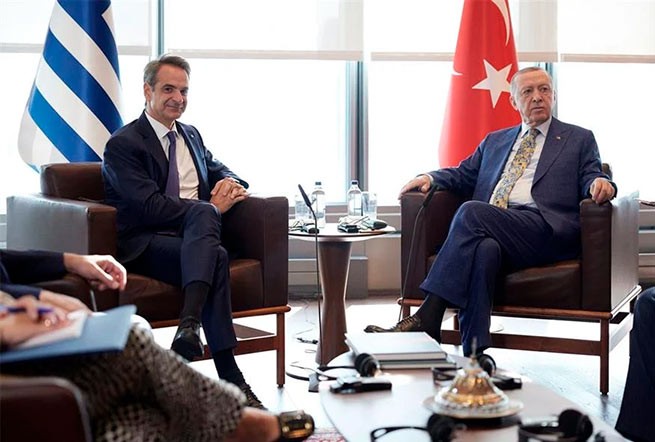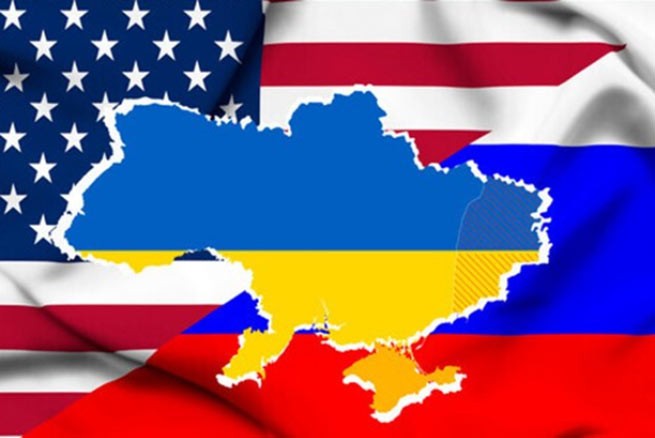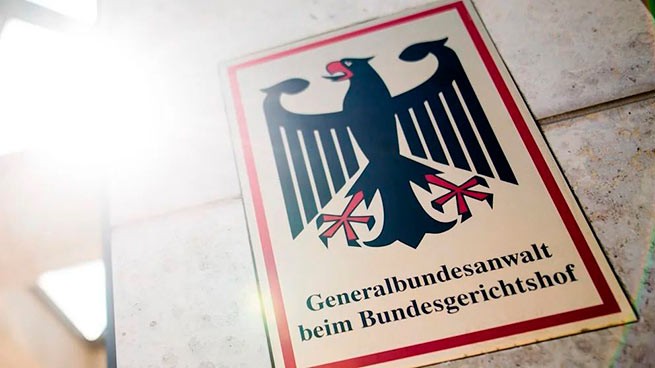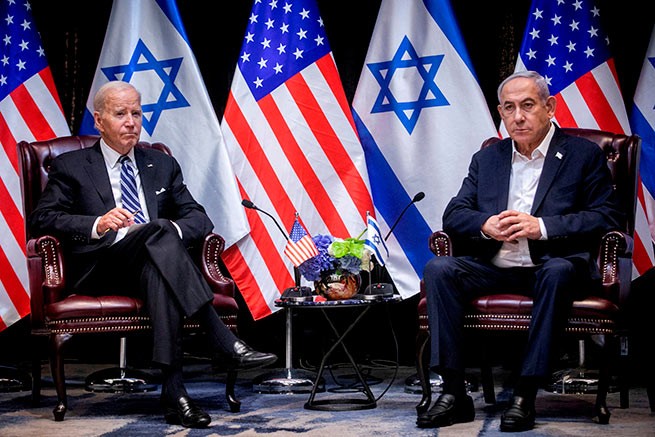A new world order is coming to the global financial market, writes Frank Giustra, columnist for the Toronto Star. The dollar looks like a lame duck, many countries are desperately looking for a replacement. Yen, euro and yuan are not suitable for this. But China and Russia may well create a settlement trading currency.
Shortly after the first fighting broke out in the conflict in Ukraine, Russia fired another volley, directly at NATO finances.
First, in response to crushing Western sanctions and the shutdown of the SWIFT global money transfer system, Moscow took swift action to protect the ruble, raising rates to 20% (later down to 11%) and imposing strict capital controls. Then she demanded that all “unfriendly” countries (read, the West) pay for the much coveted oil in rubles or gold. For almost the entire last decade, Russia has been actively getting rid of dollars and increasing its gold reserves, so it offered its gold at the rate of 5,000 rubles per gram. In addition, President Vladimir Putin advocates that the BRICS countries think about creating an international reserve currency based on their own. Finally, he spoke of the ruble backed by gold. Why are these steps so important?
Inevitable change is coming, and the reset of the global monetary system may have already begun. Credit Suisse believes that the new economic order will revolve around commodity currencies. They will seriously weaken the eurodollar system, and after the end of the conflict in Ukraine, it will shake even more. No one will undertake to predict the further development of events, but sooner or later the dollar will cease to be the only world reserve currency – and, perhaps, this will happen even earlier than everyone expects.
I foresee the emergence of at least an alternative trading currency that will compete with the dollar. It will be used exclusively in settlements between countries – in contrast to the reserve, which central banks usually use for diversification. Obviously, this is pure theory, and one can only guess about the final outcome.
If my prediction surprised you, then here are the facts. For the past 400 years, global reserve currencies have come and gone. The reserve currencies of Spain, the Netherlands and Great Britain (just to give an example) lived plus or minus a century. The reasons for their disappearance are repeated over and over again. If you’re interested in this topic, check out Ray Dalio’s book Principles for Changing the World Order. And if you do not have time, look for his video on YouTube – everything is explained there on the fingers. Alas, when the currency of world powers loses its status, it ends in bloody wars.
The dollar received its current status in 1944, thanks to the Bretton Woods agreement between 44 countries. Its essence was that the dollar would be pegged to gold, and the currencies of the participating countries to the dollar. Great idea as long as the US remains pegged to gold and financially responsible. But by 1971, there was no trace of fiscal discipline left, and President Richard Nixon essentially defaulted, decoupling the dollar from gold.
This step would have led to the most disastrous consequences if not for the brilliant move to create the so-called “petrodollar”. Saudi Arabia and the United States have reached an agreement: the former will sell oil and reinvest the dollars earned in the US Treasury market in exchange for security guarantees. Simply put, the US currency, despite all the fiscal and monetary abuses, was saved from collapse by the demand for dollars to trade in the world’s main commodity.
The world has changed a lot since 1971. The emergence of China as a global economic superpower and US rival (and the rise of the BRICS countries in general), America’s extravagance, fiscal and monetary irresponsibility (especially after the 2008 crisis), wasted trust in central banks, and now the end of the globalization experiment – these are just some of the highlights. Global trade relations are also developing (trade between Russia and the BRICS countries grew by 38% in the first three months of 2022 and reached $45 billion). Add to this how often the dollar becomes a weapon thanks to sanctions and the SWIFT system, and you can see why many countries are desperately looking for a replacement. In short, the dollar looks like a lame duck. He still rules, but the world is already wondering what will happen next. Other reserve currencies, such as the yen and the euro, have been just as misused (if not more), so they are not an alternative either.
China is the most concerned, especially with the outbreak of the conflict in Ukraine. The financial and economic war between the US and China was raging even before the start of the Russian special operation, and China was already calling for a “new international financial order.” But the fighting in Ukraine has escalated the situation even more. Chinese President Xi Jinping has criticized the sanctions – especially the way the West has adopted the dollar – and warned him of the consequences. What will come to replace the dollar as the main reserve currency? We know that the Chinese yuan cannot replace it, no matter how hard China tries. It accounts for only 2% of the world’s foreign exchange reserves. But there are alternative ways – for example, the settlement currency, partially backed by gold.
China is slowly building up its gold reserves. It is the world’s largest gold producer (12% of world production) and importer. Gold mined in China cannot be exported. By the way, the government calls to buy gold, even their own citizens. Gold, domestic and imported, simply disappears into a giant black hole. China is being cautious and does not reveal its cards – apparently because it does not want a sharp rise in prices. Domestic production alone has totaled 7,000 tons over the past 20 years (by comparison, America’s official gold reserves are 8,200 tons.) China has a habit of not disclosing its reserves for years, and then suddenly hitting everyone with numbers that are many times higher than previous ones. The last time, in 2019, the Chinese talked about 1950 tons. No one can guarantee that this figure is accurate. It could easily be double that.
How will the settlement currency backed by gold work? As economist Jim Rickards recently explained to me, full backing is not really necessary. A century ago, when the British pound was still covered with gold, its monetary aggregate M3 (the amount of cash currency in circulation) was provided only by 20%. And although the United States maintained the gold backing of the dollar at the level of 1:1 throughout the 1930s, by law they could reduce the coverage to 40%. Assuming that China’s monetary aggregate is about $1.4 trillion (9 trillion yuan), then a 40% backing of gold would require an amount of $560 billion, which is approximately equal to the US official reserves of 8,200 tons.
In order for the gold-backed currency trading system to work, at the initial stage, two countries will be enough. Since China tacitly supports Russia in Ukraine and is itself dependent on Russian oil and other goods, it is possible that it has already found its partner in this dance. Countries could create a settlement trading currency (other than a reserve currency) outside of the dollar system. They could agree to trade on a net settlement basis—that is, settled on a periodic basis (let’s say every quarter). Recently, analysts at the Russian Vnesheconombank proposed the creation of a gold-backed stablecoin under the working name “golden ruble”. According to their research, Western countries will not be able to block settlement transactions in such a currency, since its exchange rate will be pegged to the market rate of gold, and not to the dollar, euro or, for that matter, the official ruble.
With this approach, much less gold will be required. And of course, you can even provide a currency with a basket of raw materials, not necessarily gold. It’s just that gold is the only metal that is held in central banks around the world. This requires something tangible, so I do not consider bitcoin: China has already banned it and has not provided Russia with a real opportunity to circumvent sanctions.
If this does happen, what will the rest of the world do? First of all, it should be noted that the countries that account for over 80% of the world’s population decided to wait aside and did not condemn Russia for its unprovoked hostilities. Economic giants like India and Brazil, as well as the bulk of the global south, do not take sides, and many want to maintain good trade relations with Russia. Therefore, it is not difficult to imagine an extensive global monetary system in which non-aligned countries will trade both in a dollar system with the United States and in a gold-backed system with China and Russia.
And while Americans are stocking up on digital currencies, global central banks are actively buying up gold. They started back in 2010 and are still buying while reducing their dollar holdings – in 2000 they accounted for 71% but now only 59%. Physically, gold moves from west to east. At the same time, there are signs that the petrodollar system is cracking. Saudi Arabia has talked about selling oil to China for yuan and openly supported Russia on the issue of OPEC quotas, despite all the calls of the Biden administration to increase production.
Most economists counter that the dollar is “sticky” and won’t collapse so easily. I concluded that most economists are wrong about almost everything. So let’s think about how the US will react to the potential outcome I’ve just outlined. I assume that for a start they will resist and discredit everyone.
Eventually, market forces can drastically reduce the amount of dollars needed, and its value will drop accordingly. Of course, the US can, one way or another, return to the gold standard. But even with a 20% backing of its money supply, gold will have to be revalued to $7,500 per ounce.
This may seem like something out of the ordinary, but remember that in 1933 the US ordered citizens to sell their gold to the government at $20.67 an ounce, after which they immediately “changed their mind” and revalued it to $35. They robbed their own citizens to devalue the dollar by 70%.
It will be difficult for Americans to come to terms with this, and for politicians who have lost the habit of financial discipline for half a century, the gold standard will greatly rein in. In addition, you will have to go to a significant decrease in the standard of living.
Although it is possible, there will simply be no other choice if the bulk of the world is moving towards gold backing. Whatever it was, let’s hope that the transition will be peaceful. This is better than bloody transitions, and we have seen them for centuries.
Frank Giustra is a Canadian businessman, philanthropist and co-chairman of the International Crisis Group. Freelance columnist for the Toronto Star.







More Stories
4 scenarios for the development of the war in Ukraine
There was a scandal in Cyprus over the Prime Minister's plane, donated by K. Mitsotakis
Nuclear wrestling between the USA and Russia: are we heading towards the use of strategic weapons?